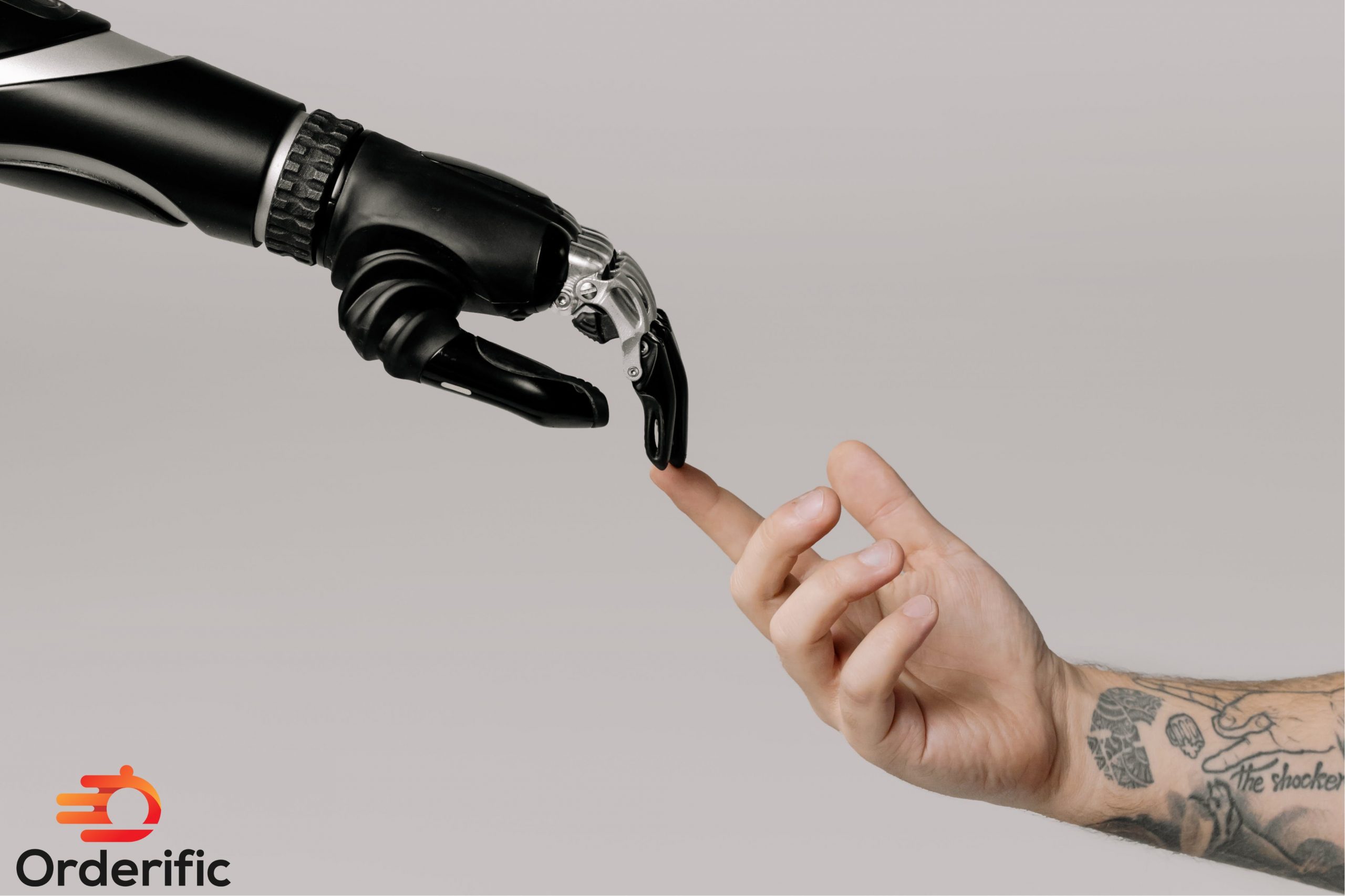Welcome to the future of golf course management, where robots have a significant impact. Imagine the sun rising over a meticulously maintained course, the dew-kissed grass perfect without human interference. Thanks to autonomous mowers, this isn’t a mere dream; it’s the reality sweeping across golf courses in North America and beyond. These robotic assistants tackle tasks from fairway mowing to course maintenance, all while golfers enjoy their tee time. They represent not just a novelty but a solution to ongoing labor challenges. Delve into golf robotics, where seamless operation meets customer satisfaction. Get ready to explore how this cutting-edge technology enhances the golf industry and revolutionizes golf course operations.
Benefits of Autonomous or Robotic Equipment
Autonomous or robotic equipment takes center stage, heralding a new era in golf course management. Visualize this: At dawn, robotic mowers, like faithful stewards, tend to the turf without human intervention. Ensuring a pristine course as golfers arrive to enjoy their tee time.
- Reduced Labor Costs: Autonomous equipment significantly mitigates labor challenges. These tireless workers require no breaks, thus reducing operational costs and boosting efficiency.
- Precision: From fairway mowing to precise course maintenance, robotic mowers deliver unmatched accuracy. Each blade of grass is treated with surgical precision, providing a uniform finish across the golf course.
- 24/7 Availability: The robotic workforce stands ready at all times. Regardless of the time, day, or night, your golf course remains in capable hands or circuits.
- Environment Friendly: Less noise, reduced emissions, greater energy efficiency. These robotic assistants are not only good for your golf course; they’re good for our planet, too.
- Increased Operational Efficiency: With these robotic stars on the field, golf course operators can focus on enhancing golfers’ experience. The right software integrated with these robots ensures seamless operation.
These autonomous workers are the silent heroes of golf courses, diligently performing their duties. They bolster the appeal of your golf course, ensuring customer satisfaction. It’s not just about golf anymore; it’s about the experience, the seamless operation, and the technological evolution shaping the golf industry. The future of golf course management is here, and it’s automated.
Challenges of Autonomous or Robotic Equipment
While the sun-dappled vision of robots tending to fairways is alluring, it has hurdles. Picture this: an autonomous mower, dutifully humming along, encounters a rogue golf ball. Without human intervention, what happens next? Here are key challenges golf course operators face when integrating these tech marvels:
- Cost of Investment: The initial outlay for robotic equipment can be steep. Golf courses, especially smaller operations, may need to improve at the price tag. However, considering long-term labor savings and precision in course maintenance, the balance may tilt favorably.
- Technical Glitches: Robots are prone to occasional hiccups like any software or tech tool. An unexpected golf course management software malfunction can disrupt the seamless operation, causing downtime and potential frustration.
- Training Needs: Club management personnel must be upskilled to handle these robotic assistants. For instance, the transition from manual to autonomous mowing demands time, patience, and a solid grasp of the golf course software.
- Dependent on Weather: Robotic mowers and machines only fare well in some weather conditions. A sudden downpour could halt course maintenance, affecting tee times and golfer satisfaction.
- Security Concerns: Robotic mowers can be vulnerable to theft or hacking like any technology. Golf course owners must factor in robust security measures, both physical and digital, to protect their investment.
Despite these challenges, the potential benefits of robotics in golf course management are undeniable. With careful planning and the right software, golf courses across North America and beyond can embrace this transformative technology. And as the sun sets on the meticulously maintained fairway, the vision of a future where robots and golfers coexist peacefully is pretty close.
How to Choose the Right Equipment for Your Golf Course
Embracing technology and integrating it into your golf course operations requires strategic planning. Start by scrutinizing your club’s specific needs. Consider factors like the size of your course, the turf type, and your budget. Next, think about the functionality you seek. Are you simply looking to automate mowing, or do you need a more advanced system that covers inventory management, payment processing, and online booking?
Once you’ve identified your needs, it’s time to explore your options. Don’t rush. Take your time. Look at different brands, read reviews, and talk to other golf course owners. For instance, John Deere and Cub Cadet are household names known for superior performance and reliability in robotic mowers.
Next, consider the software that powers these robotic wonders. Your golf course management software should be robust and intuitive and integrate your existing systems seamlessly. Jonas Club Software, Lightspeed Golf, and Agilysys Golf are some of the industry’s best choices.
Lastly, think long-term. Opt for a system that offers robust customer support and a promising roadmap for future upgrades. The right equipment is an investment, not an expense. It should add value to your golf course, enhance customer satisfaction, and ensure a seamless operation that leaves your golfers longing for their next tee time. The future of golf isn’t just about the perfect swing; it’s about the perfect blend of tradition and technology.
How Do You Implement and Manage the Equipment on Your Golf Course?
Transitioning to robotic assistance on your golf course may seem daunting, but fear not. To start, select a quieter time of year for implementation. This way, potential disruptions to golfers are minimized. Then, begin the installation process.
Often, the process involves setting up boundary wires around the fairways and greens. This will guide your new robotic mowers, like Cub Cadet or John Deere, in their tasks. Simultaneously, ensure that the golf course management software, such as Jonas Club Software or Lightspeed Golf, is fully integrated with your operational systems.
Now, it’s time for training. Equip your club management personnel with the knowledge and skills to handle the new technology. Bake it down to understandable chunks, making the transition smoother. A well-trained staff is, after all, crucial for the seamless operation of your golf course.
After installation and training, do a soft launch. Gradually introduce the technology to club members while closely monitoring the robots. This will help to identify any hiccups early and allow time for necessary adjustments.
Once everything is running smoothly, you can fully transition to the new system. Remember, robotics should enhance, not replace, the human touch in your club. Strike the right balance, and watch as your golf course evolves, offering an unmatched experience for golfers.
All these steps ensure that integrating robotic assistance into your golf operations is smooth and effective. It is the dawn of a new era in golf course management, and you are at the forefront.
How Do You Leverage the Equipment for Your Competitive Advantage?
Embracing robotics isn’t merely a stride toward operational efficiency; it’s a decisive move to gain a competitive edge. Imagine this: a golfer steps onto your meticulously maintained course, touched only by the precise hand of robotic mowers. There’s a sense of awe, a whisper of admiration. Seamlessly, your club management software handles booking, payment processing, and even inventory management in your pro shop. It’s a symphony of efficiency, and your golfers are at the heart of it all.
By leveraging the power of robots, your golf course stands apart. But it’s more than that. It’s about the experience you offer. The promise of a perfect day on the greens, undisturbed by the rumble of traditional mowers. Instead, the quiet hum of your autonomous workers provides the tranquil soundtrack for an unforgettable tee time.
Moreover, showcasing your commitment to sustainable practices further strengthens your standing. After all, these robotic mowers are not just efficient; they’re eco-friendly. They silently promise lower emissions, reduced noise pollution, and energy efficiency. This commitment resonates with today’s conscious golfers, adding another feather to your competitive cap.
Lastly, embracing technology, like the right golf course management software, sends a clear message. Your club is future-ready. You’re not just keeping pace with industry trends but setting them. By integrating robotics, you’re holding the reins, leading your golfers toward a future where tradition meets innovation. And that, undoubtedly, is your most compelling competitive advantage.
So, step into the future of golf course operations. Let your robotic workers be the silent ambassadors of your club’s commitment to excellence and innovation. Embrace the change, for the future is here, and it’s automated.
Maintaining Your Robotic Equipment: Tips and Techniques
As dawn breaks, the hum of your efficient robotic mowers resonates across the perfectly manicured fairways. However, maintaining this fleet of automated workhorses demands regular attention and care. Here are some valuable tips and techniques to keep your robotic equipment in tip-top shape:
- Routine Inspection: Regular checks should be the cornerstone of your maintenance strategy. Regular inspections will help prevent unexpected breakdowns, from battery health to blade sharpness.
- Software Updates: Like your smartphone, your robotic mowers need software updates. Ensure they’re always running the latest version for optimal performance and security.
- Cleaning: After a long day’s work, your robotic mowers deserve a clean-up. Clear any grass clippings or debris from their exterior to keep them pristine.
- Seasonal Care: As seasons change, so should your maintenance practices. Winter storage, for instance, might require battery removal and safekeeping to prevent damage.
- Professional Assistance: Don’t hesitate to seek professional help for complex issues. Regular tune-ups by trained technicians will prolong the life of your robotic assistants.
Remember, diligent maintenance keeps your robotic mowers in action and safeguards your investment. When the sun sets on your immaculate golf course, the content hum of your robotic fleet is a testament to your commitment to superior performance and innovation.

Evaluating the Return on Investment of Your Robotic Workers
The question on the lips of every forward-thinking golf course operator is straightforward: “What’s the return on investment (ROI) for these robotic workers?” The answer, though multifaceted, is profoundly promising. Imagine the sun rising over your pristine golf course, the morning mist gently lifted by the quiet hum of your autonomous mowers.
The day begins with no call for staff to mow the fairways laboriously. Instead, they’re free to focus on enhancing the golfer’s experience. This labor cost saving is the first tangible return on your investment. However, the benefits extend far beyond monetary savings.
Picture your golfers arriving for their day on the greens. Their initial reaction? Pure awe at the sight of perfectly manicured fairways, each blade of grass trimmed with the precision of a surgeon’s scalpel. This level of perfection, coupled with the tranquility only an autonomous mower can offer, elevates the golfing experience to new heights.
Moreover, it’s about more than just the striking visual appeal. The operational efficiency achieved by integrating these robotic workers leads to increased golfer satisfaction. This satisfaction is reflected in repeat visits, word-of-mouth recommendations, and heightened club reputation. Your investment in robotics isn’t just a financial decision; it’s a strategic move towards future-proofing your golf course.
The ROI of implementing robotic workers into your golf course operations is significant and multi-tiered. It’s a blend of substantial cost savings, enhanced golfer satisfaction, and a competitive edge that sets your course apart in the golfing world. In essence, the future of golf is here, and it’s remarkably automated.
The Role of Robotic Assistance in Golf Course Sustainability
As the first rays of the sun gently kiss the dew-laden fairways, a tranquil hum fills the air. Your robotic assistants, with unparalleled precision, begin their day’s work. There’s a serene ballet of technology and nature unfolding before your eyes. Unseen, unfelt, these robotic mowers go about creating a masterpiece. Each blade of grass is trimmed to a uniform height, presenting a sight that is a delight to behold.
Imagine the awe sweeping over your golfers as they step onto the greens. A sense of tranquility and perfection envelopes them, setting the stage for a memorable golfing experience. The rhythm of their game is unhindered by the clatter of traditional mowers, the harmony of their swings in sync with the quiet hum of your diligent robotic workers.
Yet, it’s not just about the heavenly experience. These robotic assistants are your silent ambassadors of sustainability. Operating with minimal noise and zero emissions signifies your commitment to a greener tomorrow. The satisfaction of your golfers is not just in the game but also in the knowledge that their favorite pastime contributes positively to the environment.
Your robotic workers are much more than mere machinery. They embody a future where human ingenuity, technological advancement, and environmental sustainability converge. A future where the traditional charm of golf blends seamlessly with the transformative power of technology. A future that begins with the simple hum of a robotic mower making its way across the greens at dawn.
Case Studies: Successful Implementation of Robotic Assistance in Golf Courses
Imagine, if you will, stepping onto the greens of some of the world’s most prestigious golf courses. Places where the integration of robotic assistance has revolutionized course operations. Each of these stories, unique and inspiring, represents a successful chapter in the embrace of future-forward technology.
First on our list is the renowned St. Andrews Links. Here, the adoption of automated mowers has led to perfectly manicured greens, much to the delight of golfers. The barely audible mowers work with a surgeon’s precision, allowing golfers to enjoy their game in peace.
Next, we fly to Augusta National Golf Club, renowned for its iconic Masters Tournament. The hallowed grounds of this golfing Mecca have seen a significant upgrade with the introduction of robotic assistance. The result? A near-impeccable playing surface that’s a testament to the integration of advanced technology.
Lastly, we visit the luxurious Emirates Golf Club, a monument to luxury in the heart of Dubai. The golf course management software introduction has transformed club operations, resulting in an elevated golfer experience.
Each of these case studies shines a light on the transformative power of robotic assistance in golf operations. They signify that the future of golf isn’t just about perfect swings but also about embracing innovative technology. So, as you walk these pristine courses, remember their journey to success is paved with the hum of robotic workers: their silent symphony, a testament to the perfect blend of tradition and technology.
Looking to the Future: Predictions for Robotic Technology in Golf Course Operations
As the sun sets on today’s golfing world, we stand at the precipice of a thrilling future. One where innovation and tradition tee off together. The key player? Robotic assistance in golf course operations.
Imagine a world where the first rays of dawn unveil a perfectly manicured fairway. There’s no clamor of traditional mowers, only the serene hum of robotic workers. These diligent assistants, operating with unrivaled precision, make every blade of grass a testimony to perfection.
Their silent work creates an ambiance of tranquility, only interrupted by the pleasing thwack of golf balls. Golfers, lost in the rhythm of their game, feast on the visual symphony of pristine greens. The experience? Pure bliss, undisturbed by the rumble of traditional machinery.
But it’s more than just a feast for the senses. Robotic assistance in golf operations signifies a commitment to sustainability. They stand as silent heroes, champions of green practices, and stewards of the environment. This commitment resonates with modern golfers, adding to the allure of the golfing experience.
And let’s remember the strategic advantage. This perfect blend of tradition and innovation sets your course apart, becoming a beacon of future-forward golfing. Indeed, golf isn’t just a game anymore; it’s an experience enhanced by the quiet precision of robotic workers.
As we forge ahead, there’s no doubt that golf’s future is here. And it’s remarkably automated. Embrace the change, for the tranquil hum of robotic assistants is the new soundtrack for unforgettable tee times.
Overcoming Challenges: Implementing Robotic Assistance in Golf Course Operations
In the realm of golf course operations, the introduction of robotic assistance is challenging. Picture the scene: dawn breaks, casting long shadows over your pristine golf course. Playing host to nature’s tranquil symphony, it is occasionally punctuated by the harmonious hum of your robotic workers.
However, this serene spectacle has its challenges. The first hurdle is acceptance. Traditionally-minded staff and golfers may initially resist this technological evolution. Yet, this obstacle can be overcome with clear communication of the benefits and a phased approach.
The next challenge lies in the initial investment. Indeed, acquiring these state-of-the-art robotic assistants requires a substantial financial commitment. However, an in-depth cost-benefit analysis often reveals the potential for significant long-term savings.
Similarly, maintaining a fleet of robotic workers requires new skills. From routine checks to software updates, the maintenance practices differ vastly from those for traditional machinery. Yet, with proper training and support, your team can quickly master these maintenance techniques.
Lastly, implementing this innovative technology requires careful planning and execution. Changes in routines, schedules, and responsibilities may seem overwhelming at first. But remember, with careful planning, these changes can symbolically herald the dawn of a new era in your golf course operations.
Ultimately, successfully integrating robotic assistance into your operations is like a well-played round of golf. It requires patience, strategy, and precision. But once you’ve overcome the challenges, the rewards are genuinely outstanding. Embrace the future, for the tranquil hum of robotic assistants is the sound of progress.
Conclusion
As the final notes of our symphony, we’re left with a vivid image. A tranquil dawn, making way for a day filled with the serene hum of diligent robots tending to pristine fairways. The transformation is profound, transforming golf from just a game to an unforgettable sensory experience where technology and tradition work together. This fusion enhances golfer satisfaction, amplifies operational efficiency, and champions sustainability. Equally important, it echoes across the landscape of modern solutions like Orderific, automating manual tasks for enhanced customer experience in restaurant operations. For more insight, schedule a FREE DEMO with Orderific, your partner in navigating the intriguing world where human ingenuity and robotic precision harmoniously blend.
FAQs
How can robotic assistance benefit golf course operations?
Robotic assistance enhances efficiency, reduces labor costs, improves course quality, and promotes sustainability in golf course operations.
What tasks can robots perform in golf course maintenance?
Robots can mow lawns, rake bunkers, and perform routine inspections for course maintenance.
How does robotic assistance impact the overall golfing experience for players?
Robotic assistance enhances the golfing experience by providing pristine playing conditions and promoting a tranquil, undisturbed environment.
What types of robotic technologies are commonly used in golf course management?
Robotic mowers, GPS-enabled sprayers, and automated raking machines are commonly used in golf course management.













